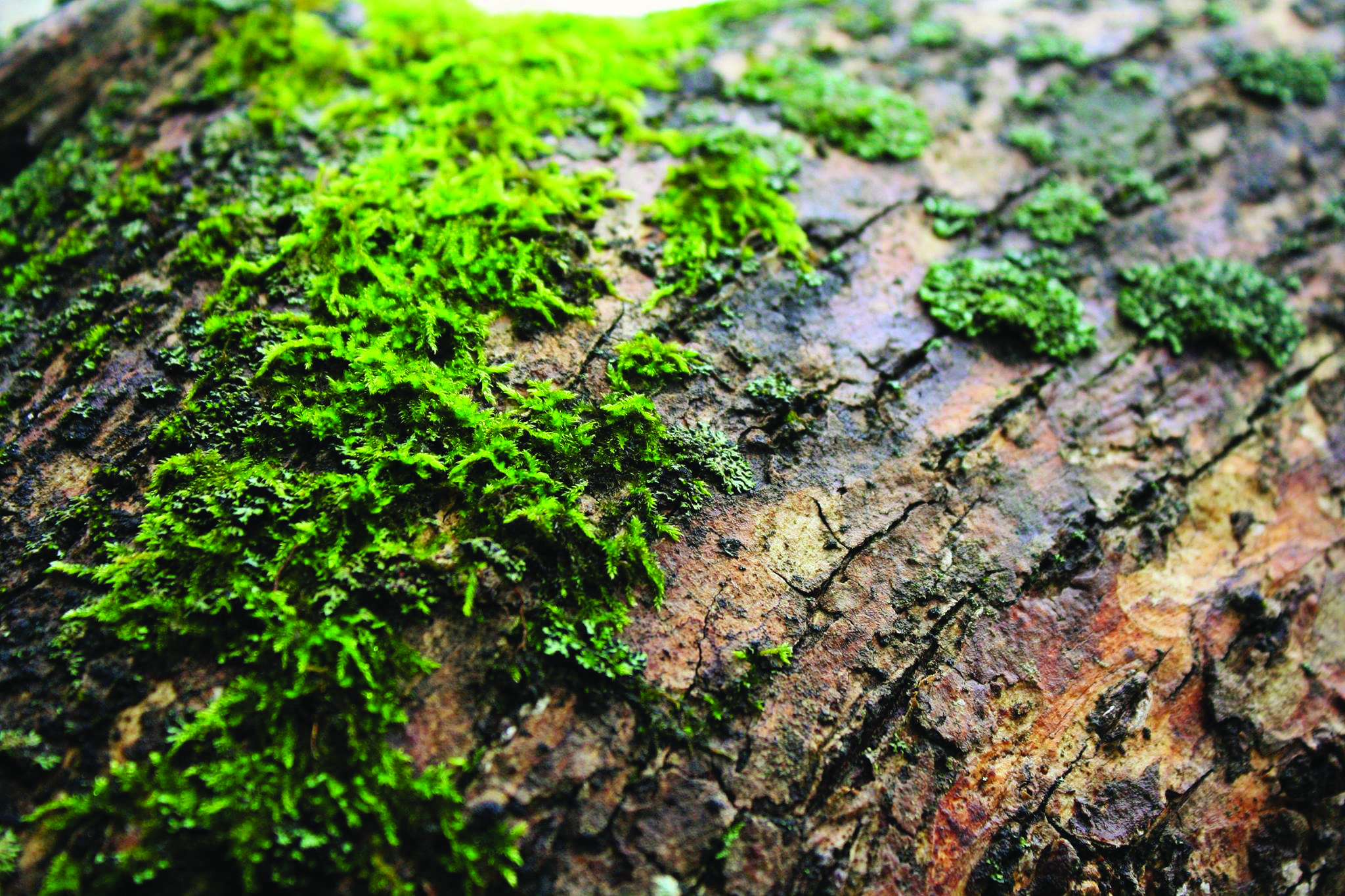The next time you’re outside, take a close look at a few different trees. You will likely see several varieties of small structures on the bark that don’t seem to be part of the tree itself. Odds are, these are lichens. Lichens grow on more substrates than just trees. Some grow directly on soil, and others grow on bare rock. Lichens are often-overlooked organisms that are something special. Although they were thought for centuries to be plants, they are not. They are in fact a relationship between a fungus and a green alga or a cyanobacterium. Lichens are comprised of a fungal thallus (body), with algal cells (primitive, microscopic plants) interspersed within it. This kind of interaction involving different kinds of organisms living together is called symbiosis.
Why would these two organisms live together when they are so different? Being plants, the algal cells photosynthesize. The fungus can use some of the algae’s products for its own growth, and in return, the algal cells have a safe place in which to live, as they would rapidly dry out and die without their fungal partner. As both organisms here benefit from the presence of the other, it is called a mutualistic symbiosis.
Now that you know a bit about lichens, why would a biologist be so interested in them? Partly because they are awesome, but mostly because they have more uses that meet the eye.
Lichens are epiphytes, growing on other organisms and substrates without harming or damaging them. As such, they must get all their nutriment from the air around them, by absorbing airborne chemicals and water into their body. This is key to my research. Since they absorb substances from the surrounding air, and are fairly indiscriminate about what they absorb, they can inadvertently bioaccumulate things that they do not need. Thus, lichens can sequester all sorts of things, including toxic heavy metals like lead, cadmium, and mercury, to name a few. While heavy metals are present naturally in minute concentrations in the environment, human activity can cause these concentrations to reach dangerous levels.
My research, funded by the Trustees of the Arthur Irving Academy of the Environment, focuses on mercury in Nova Scotia lichens. Mercury is highly toxic and capable of transitioning into methylmercury, a dangerous chemical known to cause damage to the mammalian immune system, and to alter genetic and enzymatic systems. This is important, as mercury can consequently have negative effects on humans and other organisms in food webs. One way of measuring the concentrations of this dangerous contaminant in the environment is through mercury analysis of lichens. My research aims to establish base-line data and to visualize mercury “hot spots” that may need remediation in the province.
To measure the mercury content of lichens, the first thing to do is to collect lichen samples and their GPS coordinates. Lichens do not have an especially complex internal structure, lacking even a vascular system, so removing a part of them usually does no harm to the whole organism.
Once the lichen sample is acquired, it needs to be reduced to a fine powder for analysis. For this we use a technique known as cryo-grinding. You could just grind the lichen as-is, at room temperature (21°C) but due to the lichen being flexible and tough, it would take too much time, and the results would be non-uniform. However, if you make the sample very cold, by pouring liquid nitrogen (-196°C) on it, the lichen becomes as brittle as glass, and shatters instantly when you grind it. For some context, the coldest temperature ever recorded on Earth was a comparatively balmy -94.7°C in Antarctica in 2010.
Once the samples are in powdered form, they can be analyzed for mercury content. This requires a complex machine called a Mercury Analyzer that does exactly what the name suggests. Long story short, it incinerates the powdered sample at a very high temperature, passes the resultant gases of combustion through chemical solutions, and eventually through a special device that can detect exactly how much mercury the sample contained. By knowing the amount of sample analyzed, we can extrapolate the percent concentration of mercury.
As of the end of February, the first round of lichen samples have been reduced to powder, and will be put through the Mercury Analyzer in early March. Further sample collecting will start in May, and continue throughout the summer.
Lichens are a natural, viable alternative to deployable electronic mercury monitoring devices, which are cumbersome and expensive. Lichens grow slowly over decades, making for long-term monitoring solutions that can be re-visited over many years, costing nothing to maintain or install. It’s no wonder we lichenologists are lichen’ it!





